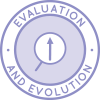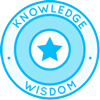
Montessori: An Education System for Everyone
We believe there is something in Montessori for everyone. Montessori is just one of the many systems we have researched to create the Education for Life Program and this page is meant to function as an ever-expanding archive of open source, free-shared, and duplicable Montessori inspired ideas that we organize into the primary components of the One Community Education Program: Curriculum for Life, Teaching Strategies for Life, Learning Tools and Toys for Life, and building The Ultimate Classroom. These components are designed to be combined to create endless “Lesson Plans for Life” purposed to grow and evolve what we feel will be the most comprehensive, effective, and diversely applicable free-education program and resource archive in the world. The One Community Foundations of Teaching, Leadership, and Communicating, combined with a collaborative Evaluation and Evolution Component (Portfolio Creation and Maintenance), help us to further grow and adapt both the program and as individuals.
RELATED PAGES










OTHER WAYS TO CONTRIBUTE TO EVOLVING THIS EDUCATION PROGRAM WITH US
SUGGESTIONS | CONSULTING | MEMBERSHIP | OTHER OPTIONS
WHAT IS MONTESSORI EDUCATION
 Montessori education is fundamentally a model of human development, and an educational approach based on that model. The model has two basic principles. First, children and developing adults engage in psychological self-construction by means of interaction with their environments. Second, children, especially under the age of six, have an innate path of psychological development. Based on her observations, Montessori believed that children who are at liberty to choose and act freely within an environment prepared according to her model would act spontaneously for optimal development.
Montessori education is fundamentally a model of human development, and an educational approach based on that model. The model has two basic principles. First, children and developing adults engage in psychological self-construction by means of interaction with their environments. Second, children, especially under the age of six, have an innate path of psychological development. Based on her observations, Montessori believed that children who are at liberty to choose and act freely within an environment prepared according to her model would act spontaneously for optimal development.
The five basic principles of implementing the Montessori Method are:
- Respect for the child: Teachers show respect for children when they help them do things and learn for themselves. When children have choices, they are able to develop the skills and abilities necessary for effective learning autonomy, and positive self-esteem.
- The absorbent mind: Montessori believed that children educate themselves: “It may be said that we acquire knowledge by using our minds; but the child absorbs knowledge directly into his psychic life. Simply by continuing to live, the child learns to speak his native tongue” (Montessori, 1966).
- Sensitive periods: A sensitive period refers to a special sensibility which a child acquires in its infantile state, while it is still in a process of initial rapid growth. It is a transient disposition and refers to acquisition of a particular trait. Once this trait or characteristic has been acquired, the special sensibility disappears.
- The prepared environment: The prepared environment makes learning materials and experiences available to children in an orderly format. Freedom is the essential characteristic of the prepared environment. Since children within the environment are free to explore materials of their own choosing, they absorb what they find there.
- Autoeducation: Montessori named the concept that children are capable of educating themselves “autoeducation” (also known as self-education). Children who are actively involved in a prepared environment and who exercise freedom of choice literally educate themselves. Montessori teachers prepare classrooms so that children educate themselves.
WHY MONTESSORI IS FOR EVERYONE
 We believe there is something from Montessori for everyone and we have looked at Montessori courses, Montessori curriculum, Montessori classroom design, and explored the question of what is Montessori to students and teachers and how can we summarize what we feel are the best, simplest, and most usable tools with application and benefit for all ages because Montessori is usable as a method for babies through adults. There are a lot of resources on middle school and high school Montessori approach. For a more comprehensive and specific look at Montessori, we suggest starting with The Montessori Foundation or the official Montessori International Site. If you have ideas from Montessori that you feel should be added to this developing guide, please use our Education for Life Collaborative Input Page.
We believe there is something from Montessori for everyone and we have looked at Montessori courses, Montessori curriculum, Montessori classroom design, and explored the question of what is Montessori to students and teachers and how can we summarize what we feel are the best, simplest, and most usable tools with application and benefit for all ages because Montessori is usable as a method for babies through adults. There are a lot of resources on middle school and high school Montessori approach. For a more comprehensive and specific look at Montessori, we suggest starting with The Montessori Foundation or the official Montessori International Site. If you have ideas from Montessori that you feel should be added to this developing guide, please use our Education for Life Collaborative Input Page.
NOTE: One Community does not believe there is any one system that is the best. It is our Highest Good of All philosophy to look at all systems and all methodologies. Our goal is to learn and integrate everything we can to better inspire and create the Education for Life program as an open source and free-shared globally collaborative and accessible program available to positively contribute to the education of anyone who chooses to use it.
Here is our continually evolving list of Montessori inspired ideas divided into the categories of the Education for Life program:
Montessori Foundations of Leadership, Teaching, and Communicating
If you’d like to help us make this list better, please submit your Montessori inspired suggestions so that we can integrate them here and into the Foundations of Teaching, Leadership, and Communicating component.
┏ Director/less: Teacher is an observer, initiates, steps back, and assists when necessary
┏ Control of Error: Encouraging self correcting, leading to accepting self, responsibility independence and action change
┏ Encouragement Teaching: teacher encourages child innate learning style rather than conforming to a set standard, while offering assistance as needed
┏ Self-Guided: Students choose their own work but they must actually do and keep track of their ongoing “work”
┏ Ideas to add? Click here to make this page better!

Montessori Curriculum Ideas
If you’d like to help us make this list better, please submit your Montessori inspired suggestions so that we can integrate the here and into the Curriculum for Life component.
┏ Pre-reading: Exposure to books, singing, stories, plays and rhyming as pre-reading curriculum
┏ Practical Living: Learn to fold, sew, button, cut, tool use, zip, pour, etc. (child sized tools – see below)
┏ Celebrating Growth: Embracing and teaching about and through the transitional time when physical growth is occurring
┏ Ideas to add? Click here to make this page better!

Montessori Teaching Strategies
If you’d like to help us make this list better, please submit your Montessori inspired suggestions so that we can integrate the here and into the Teaching Strategies for Life component.
┏ Geography: Countries learned with maps, food, dance, song, stories and history together
┏ Seasonal Learning: Lessons are created for fall, winter, spring, and summer, time frames and content geography in mind
┏ Freedom Learning: Environment is set for the child to use imagination and freedom to choose activities and learning materials that initiate curiosity
┏ Choice Learning: Children are encouraged to choose their own clothes and dress themselves at a very young age
┏ Work Records: Children keep ongoing records where they record and reflect upon work done throughout their day
┏ Take Class Outside: Teach all subjects outside, as well as outdoor activities such as soccer and bowling
┏ Going Out Program: Student initiated and organized program for going out of the classroom in small and self-chosen groups (with a chaperone) to perform a specific activity
┏ Ideas to add? Click here to make this page better!

Montessori Learning Tools and Toys
If you’d like to help us make this list better, please submit your Montessori inspired suggestions so that we can integrate the here and into the Learning Tools and Toys for Life component.
┏ Senses: Using our own senses as a tool, child learns to connect self with world; example: phonics sounds in classroom activity
┏ Sandpaper Letters: Tactile way to enjoy introducing sounds of letters
┏ Practical Life Tools: Child-size version tools for newly developing muscles to enable the process of learning how-to’s without the restrictions of adult sized and weighted tools
┏ Cutting activities for kids, shapes toys for kids, poking shapes, flash cards
┏ Work Folders: One folder is for work in progress and the other is for work completed
┏ Object Permanence Box: A child drops a little ball into a hole in the box. The ball will roll out of the box and into the attached tray thus allowing the child to experience object permanence by seeing that the ball did not just disappear. This practices precise hand movements, wrist, and finger control (known as “refined hand movements”) while sending information to the brain.
┏ Blocks: Considered an essential learning toy for all developmental stages.
┏ Puzzles: These can be puzzles to create a simple or complex picture or problem solving puzzles made of wood or metal and ranging in challenge from easy to challenging even for adults.
┏ Ideas to add? Click here to make this page better!

Montessori Classroom Design
If you’d like to help us make this list better, please submit your Montessori inspired suggestions so that we can integrate the here and into the Ultimate Classroom component.
┏ Individual Cubbies: Spaces specific to each child for keeping their stuff
┏ Play kitchen with real bowls etc. to teach handling fragile objects… and cleaning up if they break
┏ Toddler height mirrors and shelves – toddler sized brooms, tools, etc.
┏ Reading Nook: Specific space designed for quiet reading: rocking chair, reading lamp, bookshelf, beanbags
┏ The Peace Table: Conflict resolution table and area to engage in thoughtful conversation
┏ Practical Living Area: An area designated for learning to use your hands: tools, sew, fold, button, etc.
┏ Freedom Learning Environment: Environment is designed to encourage imagination and freedom through the availability of choosing one’s own activities and learning materials that initiate curiosity
┏ Ideas to add? Click here to make this page better!

OTHER RESOURCES
We're building a resource section. Click here if you have a suggestion or resource for this page.
OPEN SOURCE SUBJECT RESOURCES (click icons for complete pages)
OPEN SOURCE CURRICULUM OUTLINES (click image for summaries and links to complete pages)
CARE




SHARE




PLAY




OPEN SOURCE TEACHING METHODOLOGY SUMMARIES
Montessori | Waldorf | Orff | Reggio | Multi-Intelligence | Bloom's Taxonomy | Study Tech | I-WE
INDEX OF ALL THE ONE COMMUNITY OPEN SOURCE LESSON PLANS
THE WORLD'S LARGEST ONLINE FREE EDUCATION RESOURCE ARCHIVE
RELATED CONTENT AND OTHER RELATED RESOURCES
We're building this resource section. Click here if you have a suggestion or resource for this page.
- Montessori Materials for Language
- American Montessori Society
- Wikipedia: Montessori Education
- Article: “How a Montessori Adolescent Program Prepares Students for High School”
- Article: “Montessori Philosophy”
- Article: “Principles of the Montessori Method”
- Article: “Montessori Theory”
- Age of Montessori Article: “Stages of Development and How Children Learn”
- Article: “The Ultimate Montessori Toy List – Birth to Age 5”
- Article: “Montessori Guide – Assessment & Curriculum”
- Article: “Formative and Summative Assessment in the Montessori Classroom”
- Article: “How to Evaluate the Progress of a Montessori Child”
- Article: “Montessori Assessment Outline”
- Article: “Montessori Assessment Tools”
- Academia.edu: “Assessment Practices in the Montessori Setting”
- WikiWand: Montessori Education
- Send us your ideas
 One Community
One Community


